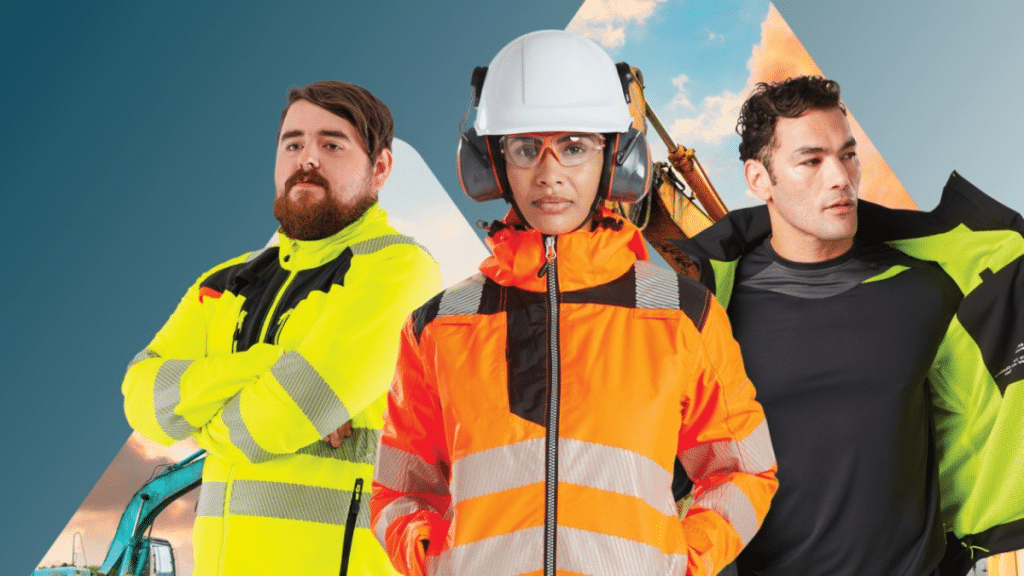Work moves fast, spaces shift, and environments demand presence. In healthcare, hospitality, and service roles, clarity makes the difference between efficiency and chaos. A professional uniform should do more than fit—it should define, distinguish, and protect.
Yet, too often, visibility gets ignored. A nurse in dim scrubs fades in an emergency. A housekeeper blends into a hotel corridor. A chef becomes indistinguishable in the bustle of a crowded kitchen. These problems aren’t minor—they slow work, create hazards, and compromise professionalism.
Construction workers wear neon vests for a reason. Service professionals need their version of high-visibility attire—designed for function, crafted for comfort, and built for recognition.
Head to Toe Uniforms ensures the right balance—visibility, industry-specific practicality, and style. Because no worker should disappear into the background.
Why Visibility Matters in Fast-Paced Service Environments
Busy spaces demand clear distinction. Service professionals work where people, equipment, and movement never stop. Delays cause bottlenecks, miscommunication, and—at worst—accidents.
- Hospitals: Emergency teams move fast. A patient in distress shouldn’t struggle to locate medical staff.
- Kitchens: Open flames, hot surfaces, and sharp tools—visibility ensures staff avoid collisions in tight spaces.
- Hotels & Housekeeping: A housekeeper should be instantly recognizable—not mistaken for a guest or overlooked when assistance is needed.
- Concierge & Hospitality: Front desk teams need uniforms that signal authority and approachability.
- Spas & Wellness Centers: Soft lighting creates ambiance, but staff should remain identifiable without disrupting relaxation.
If a uniform fails to distinguish, it compromises efficiency, delays response times, and weakens the professional image.
The Science Behind High-Visibility Uniforms in Service Professions
Not all uniforms meet the demands of visibility. Subtle, strategic elements can enhance recognition without sacrificing aesthetics.
Essential Design Features for High-Visibility Workwear
✔ Color Contrast That Stands Out in Any Environment – A white chef coat in a dim kitchen. A brightly colored uniform in a neutral-toned hotel. High contrast makes recognition effortless.
✔ Reflective or Light-Catching Accents – A touch of reflective piping, contrast embroidery, or strategic stitching enhances visibility without overpowering the design.
✔ Structured Fit That Defines the Silhouette – Baggy or ill-fitting uniforms blur distinction. A tailored shape sharpens presence.
✔ Fabric Selection That Supports Performance – Breathable scrubs for long shifts, stain-resistant chef coats, flexible hospitality wear—materials that match the job enhance both comfort and recognition.
A uniform that blends into surroundings weakens safety and professionalism. Design matters.
The Risks of Low-Visibility Workwear in Service Roles
When uniforms fail to provide contrast, consequences follow.
Higher Risk of Accidents – A housekeeper in dark clothing isn’t seen until it’s too late. A chef moving quickly in a low-contrast apron risks collision near hot surfaces.
Slower Response Times – In healthcare, seconds count. If nurses or hospital staff aren’t immediately identifiable, response lags.
Customer Confusion – Guests shouldn’t struggle to locate hotel staff. A lobby filled with indistinct outfits weakens service efficiency.
Eroded Professional Image – A concierge in a lobby or a head chef in an open kitchen should command presence. If a uniform doesn’t reinforce authority, credibility diminishes.
A uniform shouldn’t just cover—it should define.
Choosing the Right Uniform for Maximum Visibility & Comfort
Uniforms shouldn’t rely on brightness alone. They need strategic visibility elements woven into their design.
What Makes a Superior High-Visibility Uniform?
✔ Color Contrast That Works for the Environment – Darker pants with lighter tops, accent trims in key areas—subtle contrast can make all the difference.
✔ Moisture-Wicking & Lightweight Fabrics – Long shifts demand breathable materials that maintain structure and prevent fatigue.
✔ Reflective Details That Enhance, Not Distract – Thin reflective piping, subtle accents—visibility without industrial overtones.
✔ Durability Against Stains & Wear – Kitchens, hospitals, and hotels push uniforms to their limit. Workwear must withstand constant use.
✔ Ergonomic Fit That Supports Full Mobility – Uniforms should never restrict movement—nor should excess fabric create hazards.
Head to Toe Uniforms specializes in high-performance workwear that balances form and function.
Keeping High-Visibility Uniforms Effective Over Time
Even the best uniform loses impact if not maintained properly.
How to Preserve Visibility & Longevity
Wash with Care to Retain Color & Reflective Properties –Harsh detergents fade fabrics, weaken accents, and reduce visibility over time.
Avoid High Heat When Drying – Excessive heat warps stitching, damages contrast panels, and shortens the lifespan of key features.
Store Uniforms Properly – Hanging workwear maintains structure, ensuring that visibility elements remain intact.
Replace When Necessary – A uniform that fades into the background no longer serves its purpose. Refresh workwear before it becomes ineffective.
A well-maintained uniform sustains professionalism, safety, and efficiency.
Conclusion
No professional should fade into the workplace. In hospitals, hotels, restaurants, and wellness centers, a uniform must distinguish, protect, and define.
Visibility is more than an afterthought—it shapes efficiency, enhances safety, and reinforces brand identity. A chef, concierge, housekeeper, or nurse should never be mistaken for a guest, lost in a crowd, or overlooked when their role matters most.
Head to Toe Uniforms designs professional uniform and workwear with visibility in mind. Crafted for function, built for durability, and tailored for the unique needs of service professionals—because in fast-moving industries, being seen matters.
